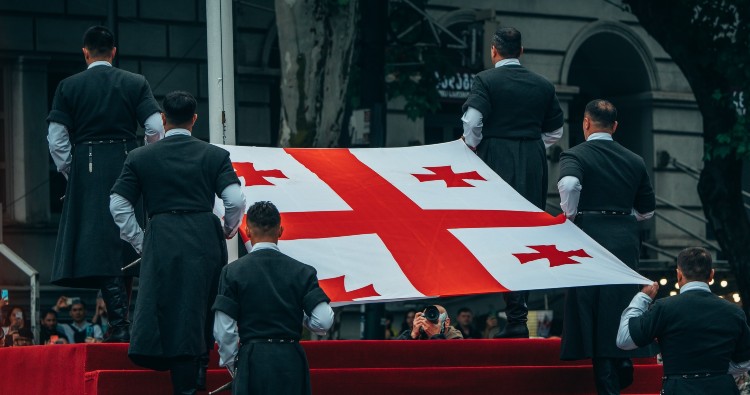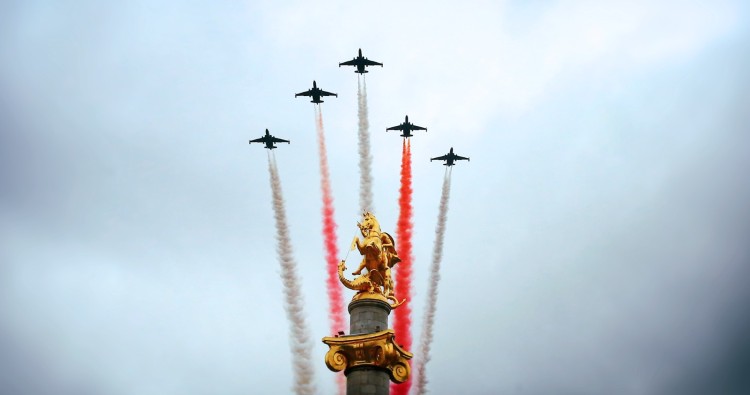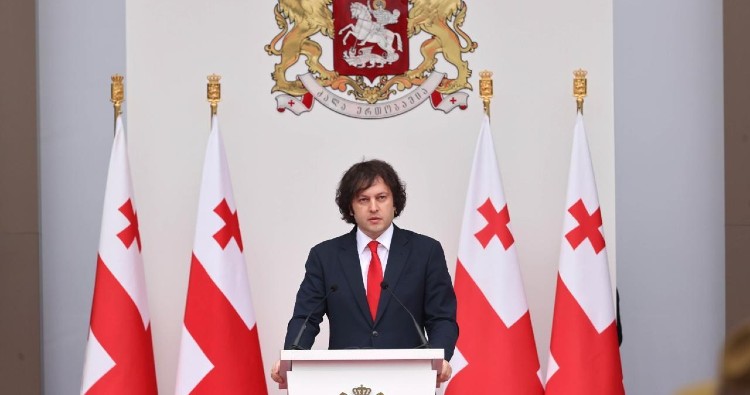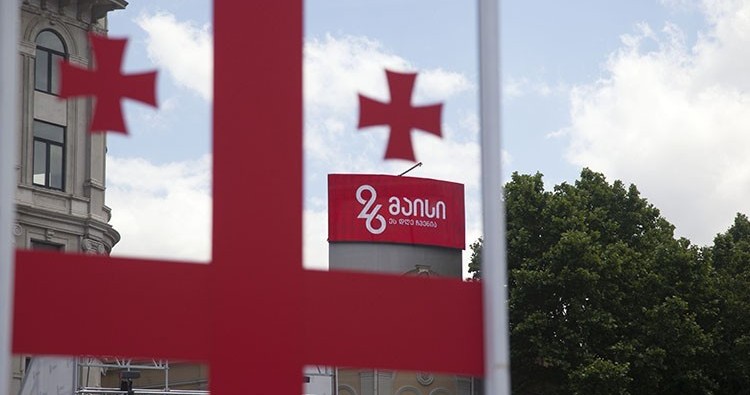Georgia’s Independence Day marked around world

The European Council Building in Brussels, the National Monument in Jakarta, Central Fountains in Zagreb, Central Square in Skopje and Maiden's Tower in Istanbul, as well as Nicosia Amphitheatre and Eleftheria Square in Nicosia and Philae temple complex in Egypt, were also lit in red and white colours and Georgian flags were displayed at Dublin Central Square and City Hall Building. Photo via Diplomatic Representations of Georgia
Georgian Independence Day, commemorating the adoption of the Independence Act in 1918, which established the Democratic Republic of Georgia in the aftermath of the Russian Revolution of 1917, is marked around the world today with various events and landmarks illuminated in the colours of the Georgian flag.

Various landmarks in major cities were illuminated in red and white colours, including Central parks in the Spanish cities of Madrid, Bilbao and Seville, the Senate Building in Brasília, Ankara’s TOBB tower, the Georgian Embassy in Tallinn and Bratislava, as well as St. Urban Bell Tower in Košice of Slovakia, several landmarks in Lithuania, Umbrellas Monument in Thessaloniki, the Hague Tower, and the 17th arrondissement of Paris.
The Georgian flag was displayed on the Times Square Billboard in New York in celebration of Georgia’s Independence Day.
Manneken Pis, a landmark bronze fountain sculpture in central Brussels, was traditionally wrapped in a Georgian traditional costume - Chokha.

The European Council Building in Brussels, the National Monument in Jakarta, Central Fountains in Zagreb, Central Square in Skopje and Maiden's Tower in Istanbul, as well as Nicosia Amphitheatre and Eleftheria Square in Nicosia and Philae temple complex in Egypt, were also lit in red and white colours and Georgian flags were displayed at Dublin Central Square and City Hall Building.

Georgian choreographic ensembles and folk concerts were held in the Spanish capital city of Madrid and the northern city of Bilbao, as well as in Ankara, Turkey. The Georgian song was performed by the Batumi’s ensemble and students of the Berlin Sunday School.
The anthem of Georgia and Georgian melodies were performed from the main bell tower of the Grote Kerk Den Haag.
The ceremonial receptions were also held in Baku, Canberra and Warsaw, as well as in Brasília and Stockholm.
 Tweet
Tweet  Share
Share



